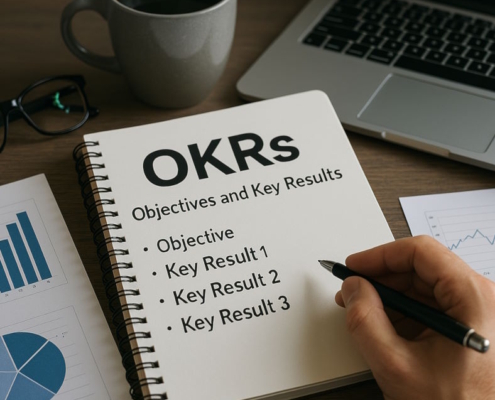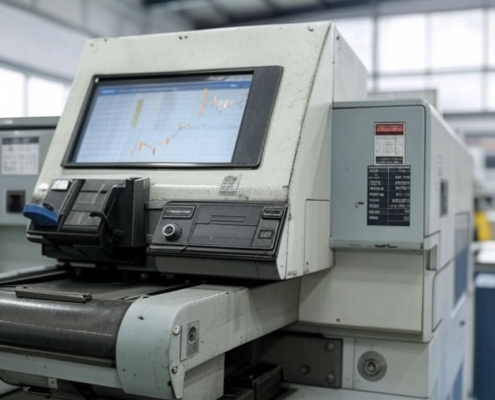How common is embezzlement in the US?
The truth is that no matter how smart or savvy a business owner is, he or she is always at risk of losing money to an embezzler. This individual may be a trusted employee, a bookkeeper, or even a family member. The harsh reality is that anyone who owns a business is not safe from the threat of embezzlement. A business owner, however trusting, should never assume that his or her employees would never steal from him or her.
There are infinite stories of how employees stole company funds without being noticed. It is such a common phenomenon that almost 80% of all business fraud is committed by employees. These employees manage to embezzle funds without being noticed by their colleagues or superiors. A business owner can avoid falling victim to embezzlement by using professional accounting software such as Quickbooks. This automated, unbiased software can help an employer catch someone stealing money. This kind of system can help limit employee access while still allowing the business owner to monitor every employee’s activity in the company’s finances.
Under state and federal laws, embezzlement is a crime. It may seem like there are always embezzlers being found out and punished, but many employees successfully take money from a business for years without being caught. This can drain a company’s profits substantially, harming its overall health. It is therefore critical that a business owner be alert so that he or she does not lose their assets or business. A business owner should learn how embezzlers operate, as well as how to catch an embezzler and prevent future theft from their company.
But before diving into these important issues, it is worthwhile reviewing what precisely embezzlement is. To be brief, embezzlement is a kind of fraud that employees commit in which they abuse a position of trust or otherwise abuse their access to steal from employers. It is essentially stealing from inside a company.
Believe it or not, embezzlers are most likely to be employees who are very active in the company, as well as extremely dedicated to their job. They may be clever enough to steal funds from a company for a long period of time without being caught. This is because they are careful to remain in good stead with the firm, offering valuable contributions.
What Are the Most Common Embezzlement Schemes?
The following are some of the most common ways embezzlers get away with stealing money from their employers. By studying these methods, a business owner will be better equipped to spot red flags when they appear.
Undercharging is one of the most used methods of embezzlement. If a business owner manages a retail firm, he or she should make sure to monitor the record books every day. Retail cashiers have been known to undercharge friends or family members for a company’s merchandise. This practice is essentially stealing business profits for their own gain.
Example: Sophie works as the cashier at a coffee shop. Whenever her best friend Gwen comes in for a latte, Sophie doesn’t charge her for the drink. Also, Sophie’s brother Damon works down the street, and he stops by for lunch every day, ordering a ham and cheese sandwich and an iced coffee. Sophie never charges Damon for his lunch, meaning that he gets a $10 meal for free. Because both Gwen and Damon stop by every day, Sophie’s employer is effectively losing almost $15 every day, or $75 a week.
In this situation, an employee would set up a ghost supplier and create false documents showing transactions with this fake business. The employee will submit payments to the ghost supplier (that is really himself or herself), before spending a business owner’s money on whatever they wish.
Example: Tanya works at an office as a receptionist. She decides to create a fake supplier who sells office equipment like ink, paper, and keyboards. Tanya creates fake paperwork showing made-up transactions with the seller. When her office pays for the imaginary supplies, assuming they are real, Tanya receives the money. She uses this money to buy herself luxury purses.
A fake refund occurs when an employee gives a refund to a customer that does not exist. The individual will issue the refund only to take the money for themselves. This kind of theft is particularly common in e-commerce businesses.
Example: Thomas works for a company that makes flower arrangements and ships them to people across the country. One day, Thomas decides to create a fake customer who orders $200 worth of flowers. When the fake customer requests a refund, Thomas is the one who collects the $200, which he uses to buy an expensive espresso machine.
In this situation, an embezzling employee will use the business’ equipment, postage stamps, and supplies for personal reasons. They may even use the business’ phone to make long distance phone calls, charging their personal bill to the company’s account.
Example: Liesel works at an office as a receptionist. When the day is slow, she likes to make long distance phone calls to her friend in Japan. Obviously, these calls become very expensive, especially when Liesel chats about her personal life for an hour at a time. Because Liesel is using the business’ phone, her long-distance calls are charged to her employer, which qualifies as office supply theft.
It is possible that an account or bookkeeper will deposit a customer’s check in their own bank account and mark the receivable as a bad debt. They would then pretend that the customer in question never paid their bill so that the debt is written off. Meanwhile, the embezzling accountant is enjoying their employer’s cash.
Sometimes an embezzling employee can add fake employees to the company payroll, thereby sending fake paychecks on a regular schedule to themselves.
What Are the Warning Signs that Someone is Embezzling from a Company?
A business owner needs to be constantly aware of all the activities going on in his or her company. If he or she is not paying attention, then it is possible that they are already losing property or money to opportunistic thieves. The following are warning signs that embezzlement may be occurring in one’s company:
- An employee does not want to go on vacation. This kind of employee will generally try to guard his or her subtle ways of embezzling money or property. By not going on vacation, they can prevent a fill-in employee from detecting their illicit activities.
- An employee who is very willing to frequently work overtime. During overtime hours, when supervisors and managers are off the clock, these employees commit their fraud. They may appear to be working very diligently as an act of kindness and loyalty toward the company, but this is just a front so that managers do not suspect them of embezzlement.
- An employee who suddenly starts spending extravagantly. If an employee suddenly starts living a fancy lifestyle, such as traveling to exotic places or buying fancy cars or clothes, all of which are above their paygrade, then this may be a sign of embezzlement. A manager or owner should inspect his or her accounts, because this employee may have found a way to steal funds under his or her nose.
- An employee with access to the company’s petty cash. If an employer notices that the company’s petty cash is disappearing much quicker than usual, then an employee may be stealing it for their own personal use.
- An employee who spends a lot of time with a company’s vendors. If an employer notices that an employee is hanging around the company’s vendors for an unusual amount of time, then it could be that the employee is running a scheme with the vendors that is reducing the company’s cash flow.
- An employee with responsibility for buying office supplies. If an employer notices that office supplies are going missing and he or she is constantly buying new equipment for the workplace, then it is possible there is an employee who is taking home office supplies.
When an employer spots any of the above red flags, he or she would be advised to carry out an investigation using the methods described below.
How Can an Employer Prevent Employee Embezzlement?
For an employer to successfully prevent embezzlement, he or she should become familiar with the most common methods that an embezzler uses to steal. The following is a list of the most effective preventative measure that an employer can take to avoid embezzlement from his or her small business.
If there is money sitting around in an office environment, it can be tempting for some employees to draw from it with no one noticing. Therefore, it is recommended to deposit any funds that are no needed immediately into the company’s bank account. Also, an owner should keep track of all his or her bank statements every month.
- Distribute Financial Duties
It is important not to assign all financial tasks to one employee. By distributing the duties to several employees, an owner is spreading out the risk. If one employee begins to steal money, it will be easy to tell from the records which employee is guilty.
An employer should ensure that a company’s petty cash is tracked in a way that he or she can see how the money is spent. It is also a good idea to have two or more employees sign before refilling the drawer for petty cash.
- Walk Around the Workplace Regularly
When an employer walks around the premises and keeps an eye on how things are running, employees will know that he or she is always watching them. A manager should be sure not to invade the employees’ personal privacy, but by observing from a distance, he or she can prevent theft from occurring.
These measures are but general suggestions for every company. An individual business may require more specific methods of observance based on its operations. A business owner should consider how his or her business operates and think like a thief: how might someone steal from the company?
When new employees start at a company, an employer should emphasize that honesty is the most important thing. An employer should create policies and a procedure manual that all new employees must sign before starting.
Before an employer loses money from embezzlement, he or she should make it a priority to talk to an employment attorney. This kind of lawyer knows all about local employment laws and has the experience necessary to prosecute embezzlement cases.
An employer should make sure that his or her attorney informs them of their employment rights and how to correctly manage any suspected embezzlement within their company. If an employer thinks that one of his employees is stealing from the company, he or she can call their attorney for legal advice on how to proceed.































